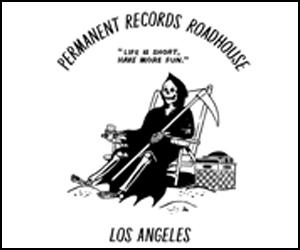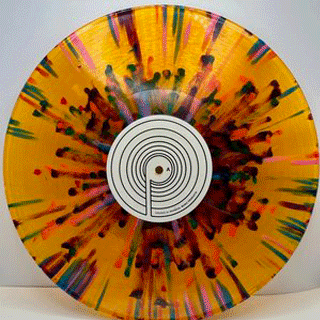Richard Swift’s posthumous album ‘The Hex’ to be released Friday
Kevin Bronson on
1

Just before his death in early July at age 41, singer-songwriter-producer Richard Swift announced he would release a new album before the end of the year. The album wasn’t actually finished, but now it is — “The Hex” will be released Friday by Secretly Canadian. It is said to be, at turns, buoyant, beautiful, heartbreaking and sardonic. In advance of the release, the label today released the song “Sept20,” on what would have been Swift’s 21st wedding anniversary.
The label also shared a career retrospective penned by Sean Cannon, which we reprint below the song.
||| Stream: “Sept20”
Richard Swift: A bio
By SEAN CANNON
Richard Swift was always about exploration. He mined bygone genres, pushed boundaries behind the board, surveyed the totality of human experience, and blew minds all along the way. He was a studio sherpa and musical traveler, with dalliances in sepia-toned AM gold, electro krautrock, jaunty cabaret, fuzzed-out garage, blue-eyed soul, and baroque pop.
Whether as a producer, sideman, or on his own, you could guarantee he was digging for something. Just ask Damien Jurado, Chrissie Hynde, Dan Auerbach, James Mercer, Laetitia Sadier, David Bazan, Nathaniel Rateliff, Sharon Van Etten, and so many others who counted Richard as a co-conspirator, collaborator, mentor, or friend. The scope of his abilities can’t be overlooked, either. In addition to producing, composing, engineering, and mixing, Richard was a gifted pickup musician. His credits include piano, vocals, drums, xylophone, bass, organ, guitar, banjo — and even photography. To say he was a musician’s musician is a vast understatement.
Born Ricardo Sigilfredo Olivarez Swift-Ochoa, his musical start came — as so many have — in the church. After performing at Quaker meetings as a teenager, he began writing his own material. He eventually settled into the Southern California underground Christian rock scene, recording under the name Dicky Ochoa. Soon after, he changed his stage name to Richard Swift as a tribute to a piano-playing grandfather who helped raise him, Clifford Swift.
While banging around SoCal, he linked up with Jeff Cloud. This is when his career as “Richard Swift” officially began. Cloud played bass for Starflyer 59 and ran the label Velvet Blue Music. Richard quickly joined Starflyer 59, contributing to their 2003 album “Old.” At the same time, VBM released several Richard Swift singles as well as his first album, 2004’s lo-fi Tin Pan Alley excursion “The Novelist.” That’s when Secretly Canadian came calling.
VBM and Secretly co-released “The Richard Swift Collection, Volume One,” which compiled “The Novelist” and the previously-shelved “Walking Without Effort.” Richard released his proper Secretly Canadian debut shortly thereafter, 2007’s expansive folk-pop album “Dressed Up For The Letdown.” He followed “Letdown” with three releases in quick succession: the electro “Music From The Films Of R. Swift” as Instruments of Science and Technology, the fuzzy “Richard Swift As Onasis,” and the soulful “Ground Trouble Jaw.”
After bonding with Wilco at a taping of “Later With Jools Holland” in the UK, frontman Jeff Tweedy invited Richard to record his next album at the Wilco loft. The outcome of that session was 2009’s “The Atlantic Ocean,” a star-studded Beatlesque masterpiece peppered with appearances from Ryan Adams, Sean Lennon, Mark Ronson, and others. The album showcased Richard’s chops as both a studio rat and songwriter.
Richard began producing other artists in earnest around this time, working with Foxygen, The Mynabirds, and Laetitia Sadier, among others. His most fruitful studio collaboration came when Damien Jurado stepped foot in Richard’s Oregon-based studio, National Freedom, to record “Saint Bartlett.” Jurado had almost given up on studio recordings when Richard came along, but the two clicked instantly. The result was four increasingly-trippy, kitchen-sink albums between 2010 and 2016 that belonged to Richard as much as Jurado
.
During this period, Richard spread his wings as a sideman away from the studio as well, joining The Shins and eventually The Black Keys. The touring gig with the Keys led to his second large-scale musical partnership, when Black Keys frontman Dan Auerbach drafted Richard for his new band, The Arcs. Richard co-wrote almost half their debut album, “Yours, Dreamily.” He also contributed to Auerbach’s solo record, “Waiting on a Song” — where he shared a writing credit with John Prine. The relationship continued when Richard was conscripted to make a new Pretenders record with Auerbach, co-writing the title track for 2016’s “Alone” alongside Auerbach and frontwoman Chrissie Hynde.
Band membership and intense collaborations didn’t slow down Richard’s studio activity. He continued to produce, compose, perform on, and mix other people’s records. Toward the end of his career, Richard worked with a range of musicians, including Ray Lamontagne, Kevin Morby, Generationals, Guster, and members of the Walkmen. He also found his greatest success as a producer — from a chart perspective — when he recorded his second album with Nathaniel Rateliff And The Night Sweats. In the spring of 2018, “Tearing at the Seams” peaked at #11 on the Billboard Top 200.
Richard suffered from alcohol addiction, and it’s ultimately what took his life in July 2018. With the support of family and friends and the assistance of MusiCares, Richard checked himself into rehab for multiple stays over the past two years, but his body gave out before he could overcome the disease.
At the same time, Richard was working on new music, an album called “The Hex” originally planned for November of this year. In typical Richard fashion he announced it himself, just before its actual completion. The accompanying photo is an image of National Freedom, but it feels like much more — a telescopic view to another planet, a final glimpse into the best of the world he inhabited; all instruments and typewriters, high contrast and curved lines. He described “The Hex” as “performed by me for family and friends.”




[…] Swift’s posthumous album “The Hex” was released in September, and the music will be performed by many L.A.-based musicians who had ties to him — Cold War Kids, Lucius, Foxygen, Gardens & Villa and other guests. […]